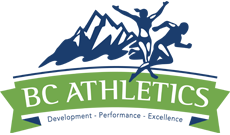IAAF - Competition Rules 2009: Road Races
SECTION VIII - ROAD RACES
RULE 240
?Road Races
1. The standard distances for men and women shall be 10km, 15km, 20km, Half-Marathon, 25km, 30km, Marathon (42.195km), 100km and Road Relay.
Note (i): It is recommended that the Road Relay race be run over the Marathon distance, ideally over a 5km loop course, with stages of 5km, 10km, 5km, 10km, 5km, 7.195km. For a junior Road Relay, the recommended distance is a Half-Marathon with stages of 5km, 5km, 5km, 6.098km.
Note (ii): It is recommended that road races be staged during April, May, or September to December, inclusive.
2. The races shall be run on made-up roads. However, when traffic or similar circumstances make it unsuitable, the course, duly marked, may be on a bicycle path or footpath alongside the road, but not on soft ground such as grass verges or the like. The start and finish may be within an athletic arena.
Note: It is recommended that, for road races staged over standard distances, the start and finish points, measured along a theoretical straight line between them should not be further apart than 50% of the race distance.
3. The start and the finish of a race shall be denoted by a white line at least 5cm wide. In events on roads the course shall be measured along the shortest possible route that an athlete could follow within the section of the road permitted for use in the race.
In all competitions under Rules 1.1(a) and, where possible, (b), (c) and (f), the measurement line should be marked along the course in a distinctive colour that cannot be mistaken for other markings.
The length of the course shall not be less than the official distance for the event. In competitions under Rules 1.1(a), (b), (c) and (f), the uncertainty in the measurement shall not exceed 0.1% (i.e. 42m for the Marathon) and the length of the course should have been certified in advance by an IAAF approved course measurer.
Note (i): For measurement, the “Calibrated Bicycle Method“ shall be used.
Note (ii): To prevent a course from being found to be short on future re-measurement, it is recommended that a “short course prevention factor“ be built in when laying out the course. For bicycle measurements this factor should be 0.1% which means that each km on the course will have a “measured length“ of 1001m.
Note (iii): If it is intended that parts of the course on race day will be defined by the use of non-permanent equipment such as cones, barricades, etc. their positioning shall be decided not later than the time of the measurement and the documentation of such decisions shall be included in the measurement report.
Note (iv): It is recommended that for Road Races staged over standard distances, the overall decrease in elevation between the start and finish should not exceed 1:1000, i.e. 1m per km.
Note (v): A course measurement certificate is valid for five years, after which the course shall be re-measured even when there are no obvious changes to it.
4. The distance in kilometres on the route shall be displayed to all athletes.
5. For Road Relays, lines 5cm wide shall be drawn across the course to mark the distances of each stage and to denote that scratch line. Similar lines shall be drawn 10m before and 10m after the scratch line to denote the take-over zone. All take-over procedures shall be completed within this zone.
The Start
6. The races shall be started by the firing of a gun. The commands and procedure for races longer than 400m shall be used (Rule 162.3). In races which include a large number of athletes, a five-minute warning before the start of the race should be given, with additional warnings if required.
Safety and Medical
7. (a) Organising Committees of Road Races shall ensure the safety of athletes and officials. In competitions held under Rules 1.1(a), (b), (c) and (f), the Organising Committee shall ensure that the roads used for the competition are closed to motorised traffic in all directions.
(b) A hands-on medical examination during the progress of an event by the official medical staff appointed by the Organising Committee and identified by armbands, vests or similar distinctive apparel shall not be considered assistance.
(c) An athlete shall retire at once from the race if ordered to do so by the Medical Delegate or a member of the official medical staff.
Drinking/Sponging and Refreshment Stations
8. (a) Water and other suitable refreshments shall be available at the start and finish of all races.
(b) For all events up to and including 10km, drinking/sponging shall be provided at suitable intervals of approximately 2-3km if weather conditions warrant such provision.
(c) For all events longer than 10km, refreshment stations shall be provided at approximately every 5km. In addition, drinking / sponging stations for water only shall be placed approximately midway between the refreshment stations or more frequently if weather conditions warrant such provision.
(d) Refreshments, which may be provided either by the Organising Committee or the athlete, shall be made available at the stations nominated by the athlete. They shall be placed so that they are easily accessible to, or may be put by authorised persons into the hands of, the athletes. Refreshments provided by the athletes shall be kept under the supervision of officials designated by the Organising Committee from the time that the refreshments are lodged by the athletes or their representatives.
(e) An athlete who collects refreshment from a place other than the refreshment stations renders himself liable to disqualification.
Race Conduct
9. In Road Races, an athlete may leave the road or track with the permission and under the supervision of an official, provided that by going off course he does not lessen the distance to be covered.
10. If the Referee is satisfied on the report of a Judge or Umpire or otherwise that an athlete has left the marked course thereby shortening the distance to be covered, he shall be disqualified.
Rule 165.24
?Transponder System
24. The use of Transponder Timing Systems approved by IAAF in events held under Rules 230 (races not held completely in the stadium), 240 and 250 is permitted provided that:
- None of the equipment used at the start, along the course or at the finish line constitutes a significant obstacle or barrier to the progress of an athlete.
- The weight of the transponder and its housing carried on the athletes’ uniform, number bib or shoe is not significant.
- The System is started by the Starter’s gun or approved starting apparatus.
- The System requires no action by an athlete during the competition, at the finish or at any stage in the result processing.
- The resolution is 1/10th of a second (i.e. it can separate athletes finishing 1/10th of a second apart). For all races, the time shall be read to 1/10th of a second and recorded to the whole second. All read times not ending in zero shall be converted and recorded to the next longer whole second, e.g. for the
?Marathon, 2:09:44.3 shall be recorded as 2:09:45.
?Note: The official time shall be the time elapsed between the firing of the starting gun and the athlete reaching the finish line. However, the time elapsed between an athlete crossing the start line and the finish line can be made known to him, but will not be considered an official time. - Whilst the determination of the finishing order and times may be considered official, Rules 164.2 and 165.2 may be applied where necessary.
?Note: It is recommended that judges and/or video recording(s) also be provided to assist in determining the finishing order.







